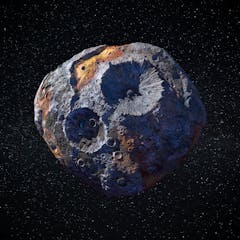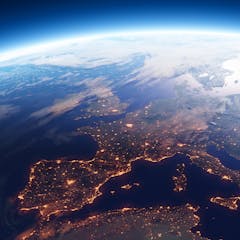
Articles on Outer space
Displaying 1 - 20 of 38 articles

The amount of space junk will increase as we continue to launch objects into space, but there are ways to curb damage on the ground.

A type of eclipse is crucial for measuring what’s in the atmospheres of planets orbiting distant stars.

An instrument on the Europa Clipper mission might be able to detect biological cells from space.

There are major gaps in space law, which could have dire consequences for space exploration and the search for extraterrestrial life.

The next generation of spacesuit needs to do more than simply protect an astronaut from the vacuum of space.

The discovery raises big questions about widely accepted models of galaxy formation.

The mission provided details about how to deflect an asteroid should one threaten Earth in future.

The capability for attacking satellites in space using cyber technology is advancing fast

The observation could fill in gaps in our knowledge about planet formation.

Spaceplanes seemed out of favour when the shuttle was retired in 2011; they now seem to be making a comeback.

Sending human ashes and personal mementoes to the Moon is now possible, but it opens up a maze of legal and ethical conundrums.

The Peregrine and Nova-C landers are due to carry out valuable science at two diverse lunar locations.

An astronomer explains why space looks so dark despite containing 200 billion trillion stars.

Measuring the ages of planets and stars is tricky. An observational astrophysicist describes the subtle clues that provide good estimates for how old different space objects are.

Liftoff to the distant asteroid is scheduled for Oct. 5, 2023 – the beginning of a six-year journey to one of the most unusual objects in the solar system.

If an astronaut were to die on Mars, neither cremation nor burial would be good options.

Regional development isn’t just about measuring the difference between today’s haves and have-nots to determine whether that gap might narrow or widen. Our idea of what is fair changes over time.

Internet access opens up the world in many ways.

A new publication clarifies how existing legal frameworks apply to space exploration and development. The McGill Manual also highlights the catastrophic implications of conflict in space.

Our reliance on space infrastructure means that conflict in space would have global catastrophic consequences. But a recent declaration by the United States provides hope.
